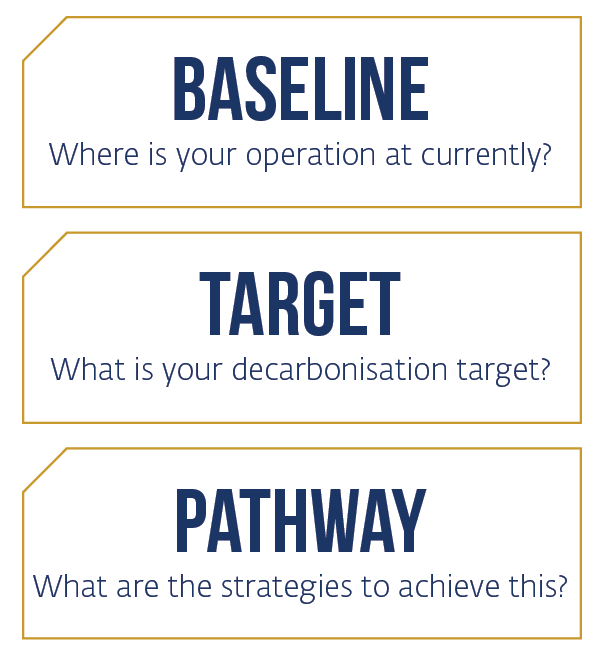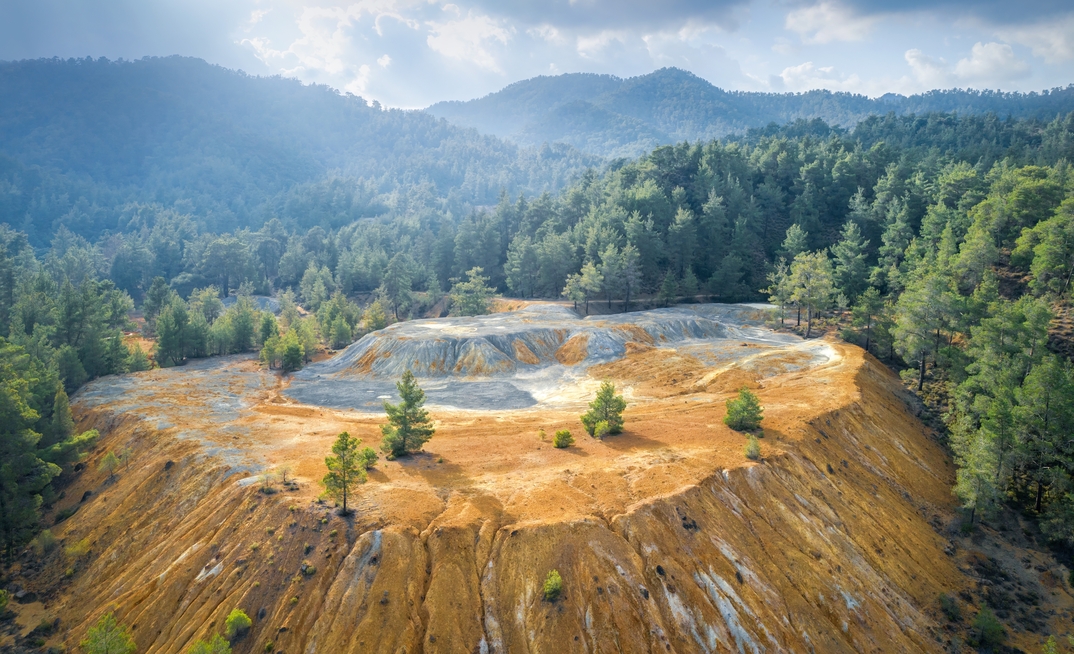The mining industry has traditionally come under scrutiny globally as a contributor to Climate Change. Despite this, industry players of all sizes have developed more sustainable strategies through the use of technology, particularly as demand for critical minerals rises. Investors and consumers alike are now turning to mining for the role the industry will play in accelerating the world's planned just transition to a low carbon, clean energy future. Consequently, mining companies have been developing their own programs and taking action to reduce their carbon emissions towards Net Zero before 2050.
Effective decarbonisation programs are planned and executed over three horizons: baseline, target and pathway. Firstly, each mining company needs to understand their emissions baseline and the emissions profile of their operations to meet both internal and external reporting requirements. Secondly, the organisation needs to identify their own decarbonisation targets. For example, some have committed to a 30% reduction in overall absolute greenhouse gas emissions by 2030 and Net Zero before 2050. Lastly, there needs to be a clear technical and economic pathway to reach these targets, built from in-depth analysis of multiple scenarios to evaluate the most efficient strategy.

Understanding your Emissions Baseline
Determining one's starting point - or baseline - is the first and most critical step, as all other decarbonisation efforts rely on a comprehensive understanding of a company's current position and contributions to Climate Change. Most mining companies in Australia are already reporting their Scope 1 (direct) and Scope 2 (indirect) emissions through the National Greenhouse Energy Reporting Scheme (NGERS). This scheme requires a facility or corporate group to report their emissions annually to the Clean Energy Regulator. Demand from shareholders, executives and other key stakeholders has resulted in the push for internal emissions reporting at a more regular cadence. Therefore, the ability to analyse emissions performance internally whilst complying with all external mandatory reporting is critical. Emissions reporting should be completed to the same scale, frequency and priority as organisations report on their financial and operational performance.
Despite the rise in emissions reporting, the process for capturing, calculating, monitoring, and analysing the data is typically very complex and time-consuming. Generally, it involves several different spreadsheets, manually managed by different departments and people. Given the number of different sources from which the information is coming, compiling and then consolidating the data to deliver actionable insights is even more challenging. Mine sites spend days or weeks trying to consolidate this data, by the time it becomes useable, the data is already outdated. There's also an obvious audit risk, which only increases as the industry faces further scrutiny regarding emissions disclosure.
Fortunately, emissions management technology exists which can integrate previously disparate systems, automate the consolidation process, provide an audit trail, and transform messy data into actionable information, all in one streamlined solution. Data can then be reported on from an external reporting perspective or placed into customised formats for any specific internal reporting purposes. Stakeholders are then armed with trustworthy information used to identify trends, issues and track current baseline emissions. By leveraging technology such as RPMGlobal's EmissionsManager, organisations have a deeper understanding of not only their current position but also a forward-looking view of their decarbonisation targets and pathway.
Setting a Decarbonisation Target
A company's decarbonisation targets are influenced by a variety of factors, most importantly whether the company has chosen to adopt a Science Based approach. In short, the Science Based Targets initiative (SBTi) is used to show companies the level and efficiency at which they need to reduce their emissions to prevent the most damaging effects of climate change. Targets are considered ‘science based' if they align with the latest climate science deemed necessary to meet the goals of the Paris Agreement, to limit global warming to well below 2°C above preindustrial levels, ideally limiting warming to 1.5°C. Most larger mining companies are opting to align with SBTi as it holds more credibility with their investors, customers, employees, and regulators.
Clearing a Path towards Decarbonisation
The question remains though, how do we develop a pathway to ensure we reach our science-based targets and align with any forthcoming carbon budgets and other limitations? There are several potential constraints to consider, mainly technology readiness, affordability, and implementation timeframes. To help analyse the myriad of options available and their suitability, technology can be leveraged to provide a more holistic view of our decarbonisation pathway. Integrating and forecasting capital expenditure, operating expenditure and materials consumption alongside carbon emissions gives a complete view of options along a decarbonisation pathway. This means that different scenarios can be tested simultaneously to understand the costs and benefits. Technology such as RPMGlobal's XERAS solution can be used to present these various scenarios back to decision-makers, providing them with a complete view of the potential impacts throughout the organisation. Without this capability, organisations risk misdirecting resources and not achieving their overarching climate related goals.
It's now clear that an effective decarbonisation program relies on each organisation addressing these three critical areas: their emissions baseline, their reduction target, and their techno-economic pathway towards decarbonisation. Simply reporting emissions to the government each year is no longer enough, and organisations need a comprehensive and holistic approach to decarbonisation. Fortunately, technology is available to break down previous challenges with capturing, calculating, reporting, and forecasting emissions. The combination of RPMGlobal's EmissionsManager and XERAS solution provides an organisation with the ability to report on their current emissions, whilst validating their future decarbonisation initiatives by testing various scenarios. This holistic decarbonisation offering, partnered with a credible science-based target gives mining companies the right information they need to achieve Net Zero before 2050.
Discover RPMGlobal's decarbonisation capabilities here.
Learn more about EmissionsManager and XERAS Enterprise.
ABOUT THIS COMPANY
RPMGlobal
With origins dating back to 1968, we have proudly delivered premier consulting and advisory services to the global mining industry for more than 50 years.
MAIN OFFICE:
- Level 14, 310 Ann Street Brisbane QLD 4000 Australia
- Web: www.rpmglobal.com/
- Email: info@rpmglobal.com
- Phone: +61 7 3100 7200

























